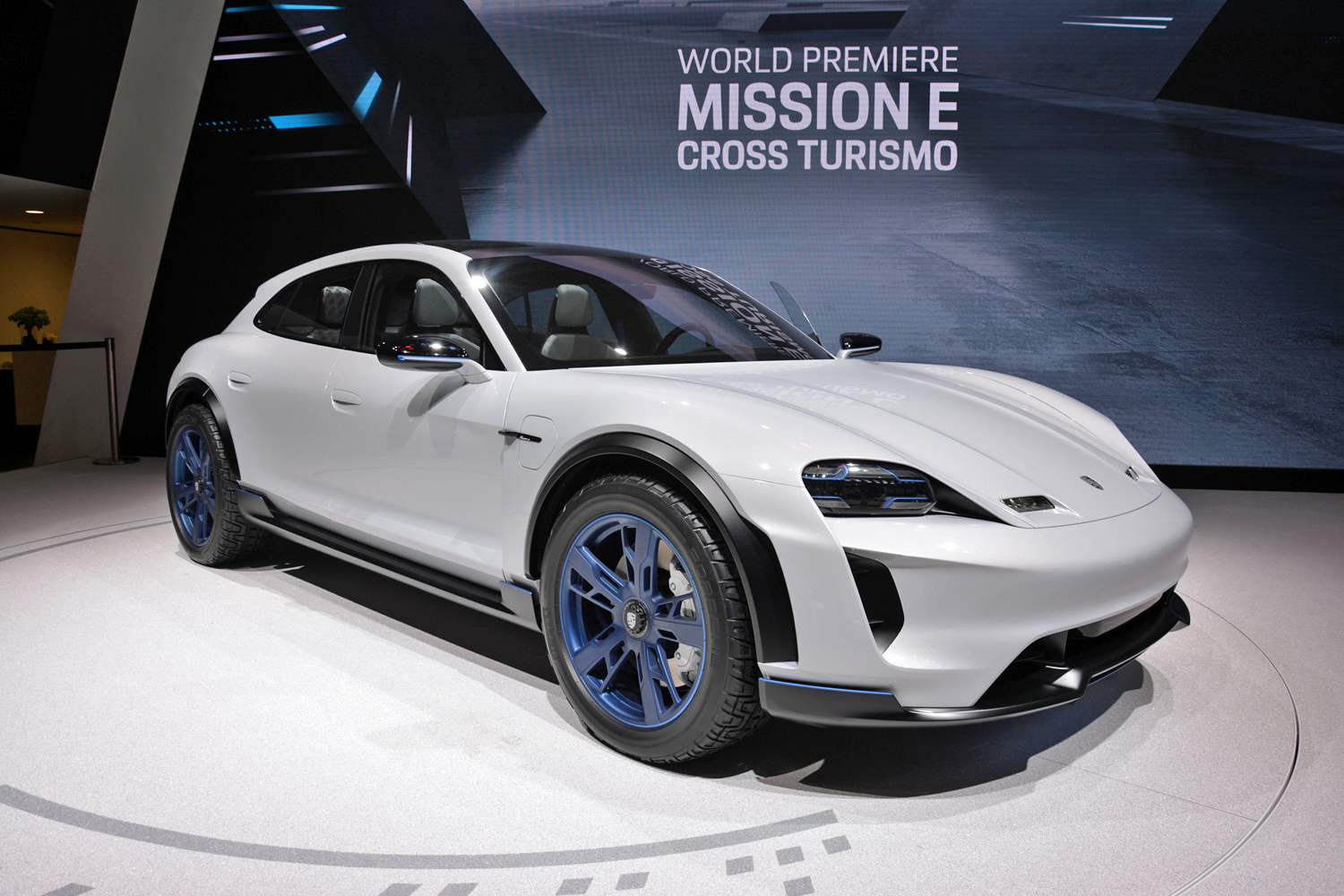The upcoming Mission E announces a new chapter in Porsche’s 70-year history. It’s entirely electric, which is an eyebrow-raising first for the brand, but its significance doesn’t stop there. It’s also the car that will take Porsche to new heights in terms of connectivity while helping it expand its business into unprecedented areas. We sat down with Joe Lawrence, the chief operating officer of Porsche’s North American division, to get insight on what the Mission E means for the company.
“It’s huge,” Lawrence told Digital Trends on the side-lines of the New York auto show. He added the company expects the electrified segment will become one of its major markets in the coming years. The Mission E will be the brand’s first series-produced electric car but it certainly won’t be the last. Part of the encouragement pushing Porsche down this route stems from the overwhelmingly positive reaction to the Mission E from prospective buyers and American dealers alike. “We talk to dealers; they tell us we can’t get it here soon enough.” The Mission E Cross Turismo concept (pictured above) eclipsed other big debuts as one of the stars of the last Geneva auto show.

The specifications sheet makes the Mission E impressive on paper. It uses two motors, it offers all-wheel drive, and it boasts about 300 miles of real-world range from a lithium-ion battery pack stuffed directly under the passenger compartment. Think of its basic platform as a skateboard. An innovative 800-volt charging system developed in-house promises to help eradicate range anxiety by replenishing the battery pack in record time. Porsche calls this concept Turbo Charging.
The Mission E will be the brand’s first series-produced electric car but it certainly won’t be the last.
The 800-volt system and the corresponding infrastructure will become indispensable tools for Mission E owners who want to take a road trip, but Lawrence predicts 90 percent of charging will be done at home or in the office, where charging times matter less. For these applications, Porsche is looking at offering wireless inductive charging, a technology sister company Audi already pioneered on the 2019 A8. Interestingly, the company could also build its own network of charging stations across the United States.
“We’re looking at putting convenience stations at interesting properties that might be a good fit for our customers, whether it’s a high-end hotel or a resort. There is potential. They would be built and maintained by Porsche,” Lawrence revealed.
Today, an electric car is also a high-tech one. These two facets of the automobile industry go hand in hand, and we’re still several years away from seeing an entry-level, battery-powered hatchback with steel wheels, black plastic bumpers, and a CD/MP3 player in lieu of a touch screen merge into the mainstream. Porsche understands this, so it’s making the Mission E its most connected car yet. It will get an entirely digital instrument cluster, and it will be compatible with an over-the-air updating system that will, among other features, let the driver update the infotainment system to a new version or unlock more range for a weekend getaway, for example. Half of this unprecedented push towards connectivity features comes from customers; Porsche takes credit for the other half as it tries different ideas to see what works and what doesn’t.
“Connectivity […] is certainly something customers are asking for. I think there’s also some degree of creative engineering going on, solving questions that may not yet even be in the mind of customers. That’s what innovation is all about. That’s something we will continue to push forward,” Lawrence explained.
Mission E sales will begin shortly after the model breaks cover. Its introduction will take place before the end of the year, either at a major auto show or during a standalone event. Eager motorists might be able to reserve a spot in line and become one of the first to take delivery of the new electric Porsche. The brand hasn’t completely ruled out a Tesla-like reservation system, though it’s not actively planning one as of writing.

“That’s something we don’t have plans for. It doesn’t mean that we won’t. We’ll work together with our dealers on determining whether that’s something that will make sense or not,” Lawrence told us when we asked the possibility of opening up pre-orders.
So, what’s next? Will every Porsche be electric from now on? Not a chance, says Lawrence. Electrification is merely part of the company’s strategy as it puts together its game plan for the next decade. The Stuttgart-based firm will continue to invest in plug-in hybrid powertrains, like the ones found in the Panamera and the Cayenne, and in regular internal combustion engines, like the flat-four and -six units that equip the 911 and 718 model lines.












